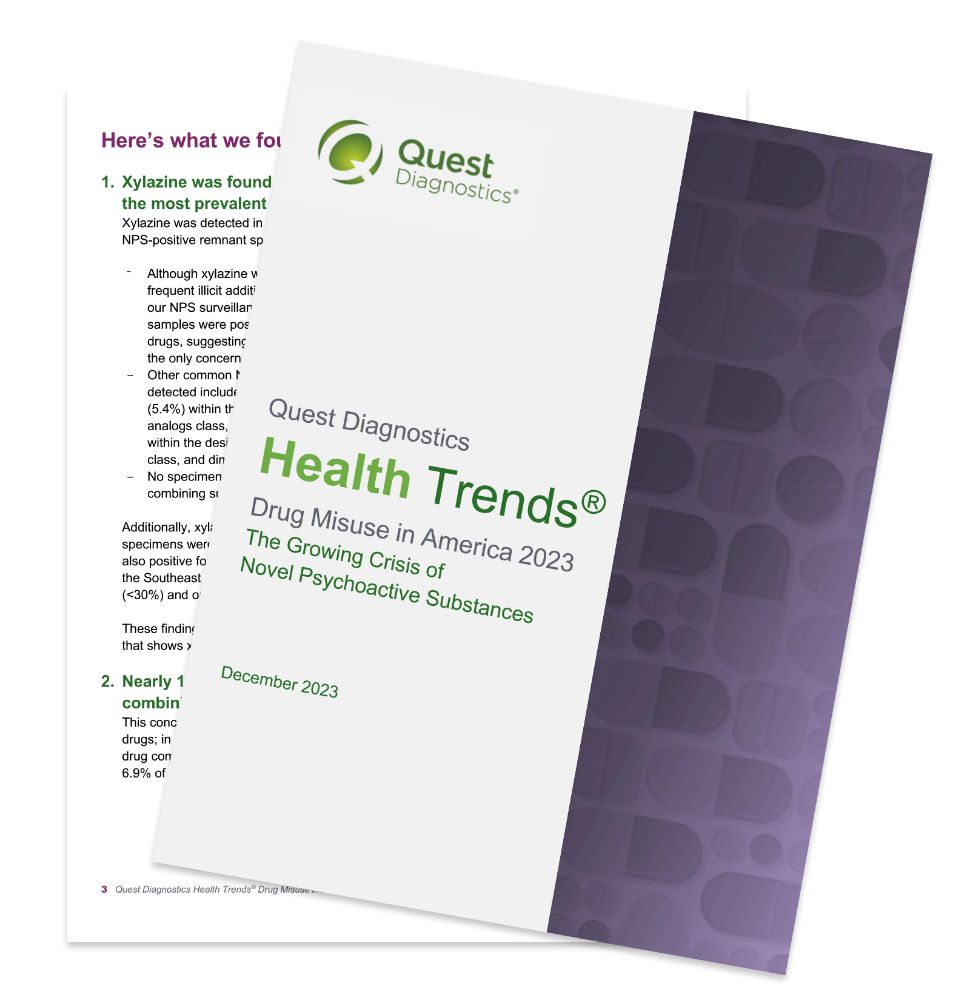Comprehensive, definitive testing in a fast-paced NPS market
The Drug Monitoring, NPS panel simultaneously identifies a broad array of NPS classes using definitive liquid chromatography-tandem mass spectrometry (LCMS/MS)-based testing and reports out at the class level to help identify misuse.
Current drug classes include:
- Designer benzodiazepines, ie BZS, clonazolam
- Designer fentanyl analogs, ie carfentanil, chlorofentanyl
- Designer opioids, ie nitazenes
- Designer stimulants, ie fluorexetamine
- Synthetic cannabinoids, ie ADB-5Br-PINACA
- Other illicit additives, ie xylazine, tianeptine









